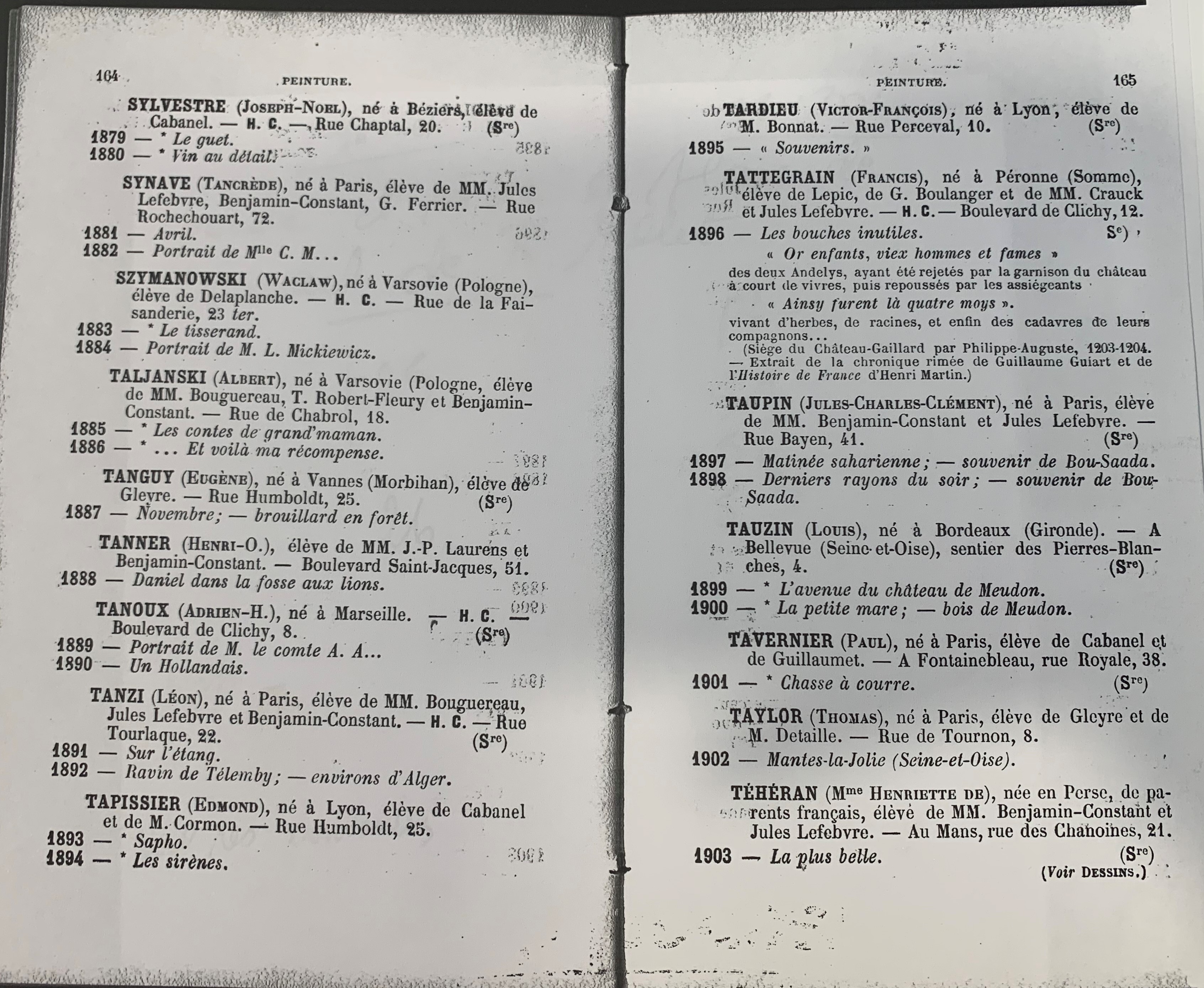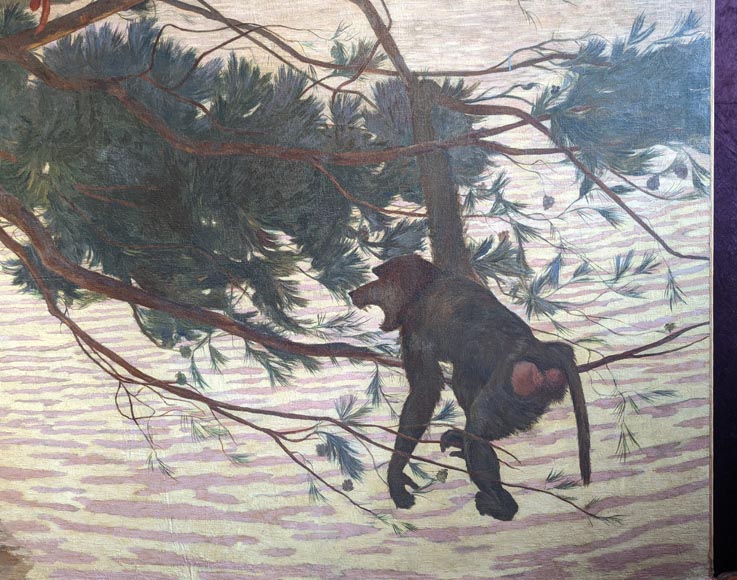Style Napoleon III / Ref.13600
Edmond Anne Antoine TAPISSIER « Les sirènes » Salon of 1896
Dimensions
Width 165'' ⅜ 420cm
Height 99'' ⅝ 253cm
Depth: 1'' ⅛ 3cm
Origin:
France, circa 1893-1896
This large painting was made by the painter Edmond Tapissier between 1893 et 1896. The artist depicts here a scene on a bank where three naked young women watch a boat far away. The composition is astonishing as the whole balance of the painting, which was tipping to the left, is re-established by the monkey and the parrot. The harmony of the colors is brought by the strength of the peacock and the parrot. Also, the pine branch which is going down the sea breaks the monotony of a too important stretch of water.Edmond is the second son of the silk merchant Antoine Tapissier and Benoite-Angélique Towex-Comte. Antoine Tapissier who stayed widower put his sons in the Collège des Chartreux in Lyon. In 1879, Edmond was 18 years old, he’s an elegant and cultured young man who is seeking for his path. He starts by following classes with the painter Chatigny who was the student of Picot and Chenavard. Chatigny knew Ingres, and was friend with Henner, Bertrand, Courbet and Manet. 1882 was the year of the drawing from nature learning and the first mural decorations. The following year he leaves for Paris and dedicates himself to the copies of the Italian and Flemish old masters. From 1883, the newspaper started to speak about him and recognize that “there is hope”. During the Autumn 1887, he integrated the Ecole des Beaux Arts and entered Cabanel and Cormon’s workshops. Tapissier made his first exhibition in the Salon in the same year. It’s in the period of the portraits tainted with symbolism that he’s making his debuts. He’s received by Puvis de Chavanne to the Society des Artistes Français in 1891. In the same year he decorated the chapel in Saint Étienne and composed there three large scenes of 3 meters, giving him appetite and knowledge for the large compositions.
During Summer 1893, Tapissier left for the Midi region and made there the studies of his paintings Sapho, Les jeunes filles de Lesbos and Les Sirènes. It’s thanks to this last painting that Tapissier knows the true success in the Salon des Artistes français in 1896. In this period was also made Le songe d’une nuit d’été.
In 1919, he brings from his travels with Charles Fouqueray and Auguste Matisse in Italy, Greece and Middle East some watercolors that show his new inspirations. The style of these painters is a mix between the solidity of the classic disposition and the Impressionist freedom. At the same time he creates many cartons of an extraordinary quality to be weave in the Gobelins, Aubusson, and Beauvais such as La Fontaine de Jouvence, important tapestry project for the Gobelins.
Excerpt from Edmond Tapissier’s diary where he explains from where his inspiration comes: « Still quite in a bad way, I don’t know who advised me to go the Midi region in Carqueiranne. He knew the place, quiet, not crowded, an ideal stay for a painter. I went there with my color box and some canvas and find myself good. A small inn next to the sea. I ate there especially meals from the region, grilled fish, bouillabaisse, zucchini and eggplants. The small boats bring the fish in front of the inn and we could choose. I woke up early and painted some sea corners with maritime pines, very hard. Lunch at noon and nap until 4am. The active life restarts. I went back to my pines, I worked quite late next to the sea on a small terrace, from where we could see the sunset. One evening, the sea was pink-gold, some more or less naked children played on the bank. Their small bodies and the pines branches to which they were mixed detached on the water brilliant of bright colors. I drew everything on a small canvas with some colors touches and here comes the origin of the painting « Les sirènes ». I finally find a personal note ». Les Sirènes were a success in the 1896 Salon. But the painting did not received only praises, which testify that the artist has find a personal note, a style in which, for the first time, are underlined the characteristics of his talent: precision of the drawing, idealization of the shapes, brightness of the colors daringly put together and taste for the large composition. If the purity of the three naked women reminds a little of Puvis de Chavanne’s drawing style, we have to note that the heat of these golden bodies is no where to be find in the work of the latter.



Informations
Price: on request
Recommended for you :
Dimensions:
Width: 227
Height: 161
Dimensions:
Width: 65
Height: 195
Depth: 3
Dimensions:
Width: 178
Height: 129
Depth: 14
Dimensions:
Width: 77
Height: 110
Depth: 5
Dimensions:
Width: 43
Height: 63
Dimensions:
Width: 117
Height: 90
Depth: 8
Dimensions:
Width: 20
Height: 18
Dimensions:
Width: 32
Height: 41
Dimensions:
Width: 227
Height: 298
Depth: 9
Dimensions:
Width: 76
Height: 84

























